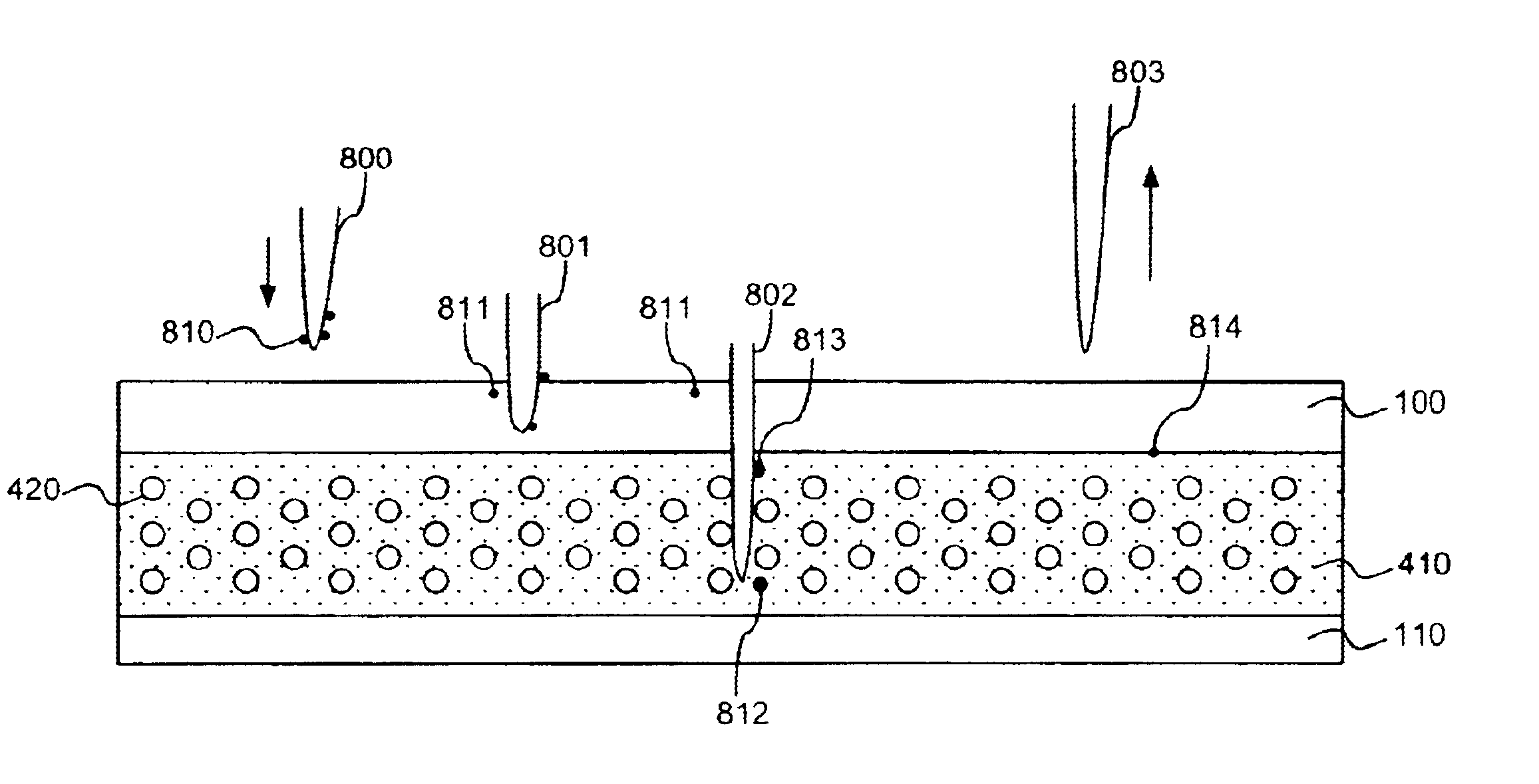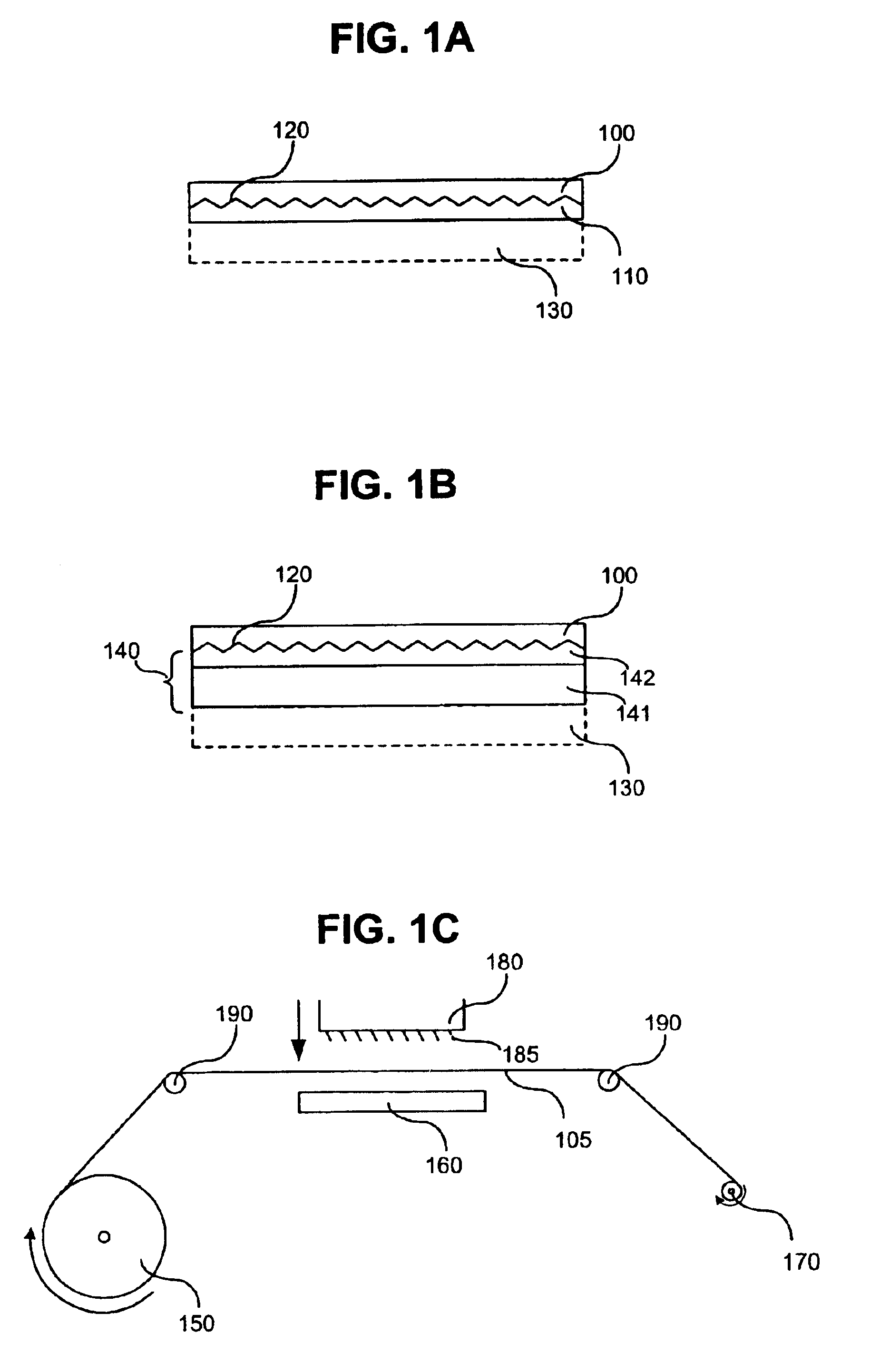Apparatus and method for cleaning test probes
a technology for cleaning apparatus and test probes, applied in the field of probe cards, can solve the problems of dies being “bad” (non-functional), pad material to the probe tip may contaminate the probe elements, and the dies being “good” (full function)
- Summary
- Abstract
- Description
- Claims
- Application Information
AI Technical Summary
Problems solved by technology
Method used
Image
Examples
Embodiment Construction
Table of Contents
I. Terminology of the Invention
II. The Cleaning ApparatusA. Abrasive Substrate LayerB. Tacky Gel Layer / Material1. Silicone Base Resin2. Cross-linking Compound3. Orientation of Components
III. Method of Making the Cleaning Apparatus
IV. Method for Cleaning Probe Tips
I. Terminology of the Invention
The term “probe tip” refers to the end portion of a probe element used for testing a semiconductor device.
The term “probe element” refers to, but is not limited to, tungsten needles, vertical probes, cobra probes, L-type probes, plunger probes, spring contact probes, and contact bump probes formed on a membrane.
The term “spring contact” (also referred to as a “contact spring” or as a “spring”) refers to, but is not limited to, any spring contact available now or in the future from FormFactor, Inc. a Delaware corporation. Any type of spring contact presently known can be used in according with the present invention. Examples of spring contacts that can be used with the present ...
PUM
| Property | Measurement | Unit |
|---|---|---|
| width | aaaaa | aaaaa |
| width | aaaaa | aaaaa |
| abrasive | aaaaa | aaaaa |
Abstract
Description
Claims
Application Information
 Login to view more
Login to view more - R&D Engineer
- R&D Manager
- IP Professional
- Industry Leading Data Capabilities
- Powerful AI technology
- Patent DNA Extraction
Browse by: Latest US Patents, China's latest patents, Technical Efficacy Thesaurus, Application Domain, Technology Topic.
© 2024 PatSnap. All rights reserved.Legal|Privacy policy|Modern Slavery Act Transparency Statement|Sitemap



